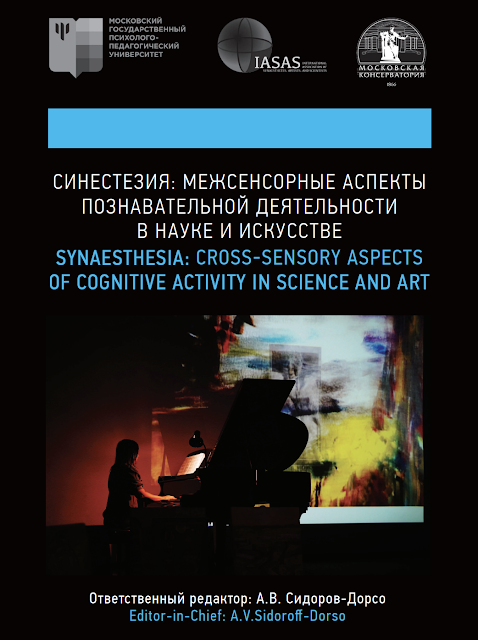PUBLICATION: Synesthesia: intersensory aspects of cognitive activity in science and art
 |
| Svetlana Rudenko (Pianist) and Maura McDonnell (Visual Music Artist) - Visual Music Collaboration on Scriabin Piano Sonata No.5., Moscow, 2019 |
Cover of Publication:
 |
| Proceedings of the II International Conference of the International Association of Synesthetes, Artists and Scientists (IASAS) |
The book consists of the proceedings and materials of the II International Conference of the International Association of Synesthetes, Artists and Scientists (IASAS). The title of the conference was Synaesthesia: Cross-Sensory Aspects of Cognition Across Science and Art and it was held in Moscow. The editor-in-chief for this publication is A.V. Sidoroff-Dorso (IASAS Vice President of Academics, Science, and Global Enterprise)
ISBN: 978-94051-260-8
Publisher: Moscow State Psychological and Pedagogical University
Year of publication: 2021
Format: online edition
Портал психологических изданий PsyJournals.ru — https://psyjournals.ru/synaesthesia2021/issue/index.shtml [Synesthesia: intersensory aspects of cognitive activity in science and art]VIEW PDF online:
https://psyjournals.ru/synaesthesia2021/issue/index.shtml
https://psyjournals.ru/synaesthesia2021/issue/index.shtml
Table of contents
I am proud to mention that the cover photo consists of a visual music performance of Scriabin's Sonata N5 by concert pianist Svetlana Rudenko with visuals crafted by Maura McDonnell for the performance.
